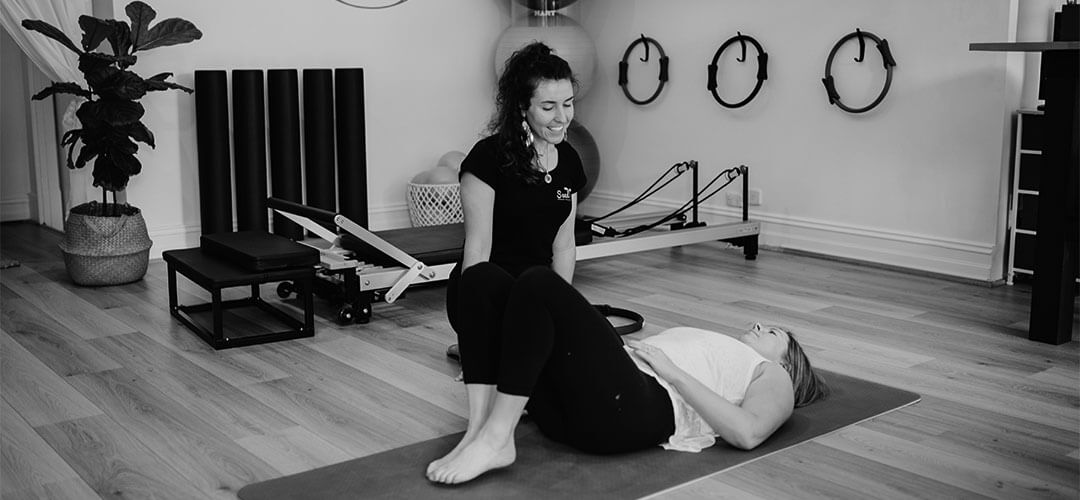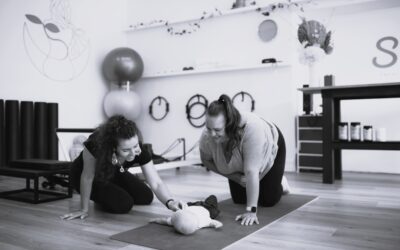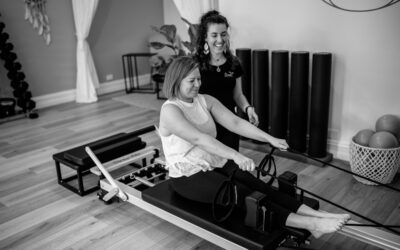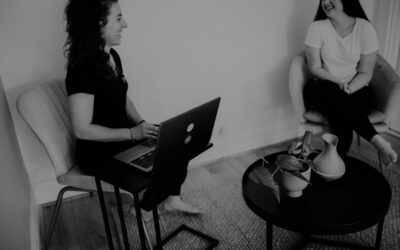The pelvic floor not only consists of muscles, but fascia, ligaments, blood vessels, and nerves, which forms the floor of the pelvis. Think of it like a trampoline reaching from your pubic bone to your coccyx and from one ischium (sit bone) to the other.
The function of the pelvic floor is to:
- Support pelvic organs (bladder, uterus, rectum)
- Keep continence of urine and faeces
- Permit birth
- Allow intercourse
- Support defecation
Approximately 50% of women asked to contract their pelvic floor muscles do it incorrectly by using abdominal muscles and valsalva manoeuvre (breath holding), thigh, or gluteal muscles instead.
Dysfunctions with the pelvic floor include prolapse, leaking urine or faeces, and urinary frequency or urgency. These dysfunctions can occur at any time in life or from multiple different contributing factors such as trauma during pregnancy, chronic coughing, surgery, being overweight, hormonal changes, and more.
Signs of pelvic floor dysfunction:
- Dragging or heaviness in the vagina
- Leakage during walking, running, coughing, laughing, bending etc.
- Frequent urination (the normal average is 4-6 voids per day)
- Frequent night time urination
- Straining to commence voiding
- Sensation of incomplete emptying
- Chronic constipation
Pelvic floor dysfunction can be uncomfortable, embarrassing, stressful, and sometimes cause women to avoid social and sexual interactions and situations. Seeking help and talking to someone about your situation can be difficult, but your concerns should be heard and can be helped!
Exercise Physiologists can work closely with your doctor, pelvic floor physio, gynaecologist, and you, to rehabilitate your pelvic floor and guide you back to doing what you love confidently.
Rehabilitation and strengthening of the pelvic floor begins with breath work. The pelvic floor works extremely closely with our diaphragm. The diaphragm is situated in the rib cage directly above the pelvic floor, so when we inhale, the lungs expand and the diaphragm muscle moves downwards towards the pelvic floor which then also descends. When we exhale, the diaphragm recoils and the pressure on the pelvic floor is released. The pressures inside our abdomen and on the pelvic floor change during inhalation, exhalation, lifting, sitting to standing, and all other movements. This is called intra-abdominal pressure. Controlling intra-abdominal pressure through correct diaphragmatic breathing is imperative in pelvic floor health and rehabilitation.
Additional to the diaphragm, the core and back muscles also contribute to the workings of the pelvic floor. If any of these other muscles are struggling it will impact the pelvic floor. The body is an amazing system of intricately linked parts and it is so important to work these together!
In conjunction with breath work, teaching correct visualisation and contraction of the pelvic floor muscles in various postures and movements will be progressed through your rehabilitation and strengthening. I start women on the floor and begin teaching the breathing, visualisation, contraction, and core work. From there, we start to move limbs while supporting and engaging the pelvic floor correctly, and then we kneel, stand, and move progressively. The pelvic floor is a dynamic and reactive structure so we need to teach and work with it in that way to integrate control, awareness, strengthening, and supportive patterns into your everyday life.
Along with the movement and depending on your situation, I also advise and guide you through other techniques such as keeping a bladder diary, bladder retraining, restorative techniques, nutrition, and multiple other assessments to direct you back on track and in control.
Remember, pelvic floor dysfunction or concerns can happen to any woman, at any time, of any age. Please listen to your body and seek help if you are experiencing issues – you shouldn’t have to just live with it!




